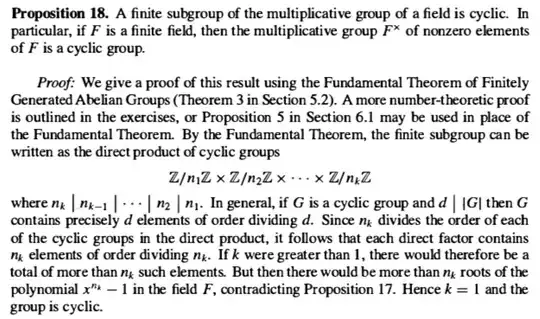Dummit and Foote's Abstract Algebra contains a proof that a finite subgroup of the multiplicative group of a field, $F$, is cyclic. However the seems unnecessarily complex to me. Certainly their version works (pictured below), but I'm curious why they don't simply take the approach of adding $(1,...,1)\in(\mathbb{Z}/n_1\mathbb{Z}\times\cdots\mathbb{Z}/n_k\mathbb{Z})$ to itself $n_1\cdot n_2\cdots n_k$ times to show that the group necessarily has a generator. Does that approach somehow fail?
Dummit & Foote's proof:
